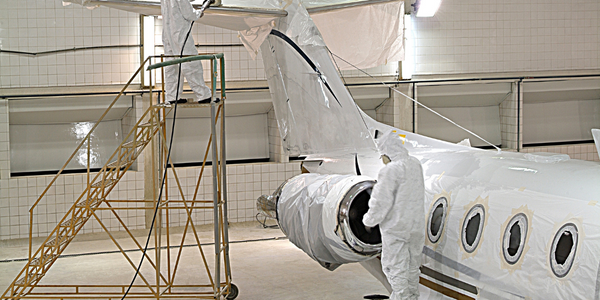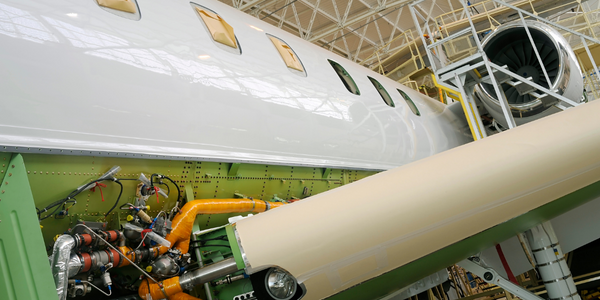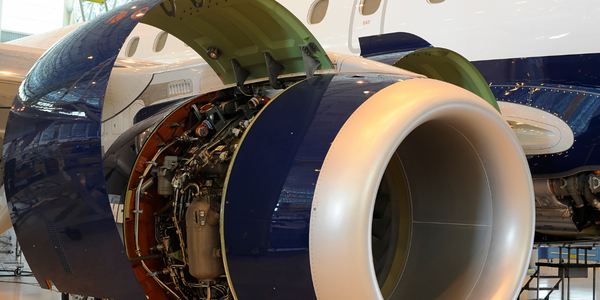Cloud-Based Industrial-Scale Simulation for Aerospace: A Case Study of Bombardier Aerospace and Rescale

Technology Category
- Analytics & Modeling - Digital Twin / Simulation
- Infrastructure as a Service (IaaS) - Cloud Computing
Applicable Industries
- Aerospace
Applicable Functions
- Procurement
Use Cases
- Digital Twin
- Virtual Reality
Services
- Hardware Design & Engineering Services
About The Customer
The customer in this case study is Bombardier Aerospace, a global leader in the aviation industry. With over 35,500 employees, Bombardier Aerospace holds a leadership position in global markets. The company is known for designing, manufacturing, and supporting innovative aviation products for various markets, including business, commercial, specialized, and amphibious aircraft. For this project, they collaborated with Rescale and Ubercloud's HPC Experiment to demonstrate the effectiveness of industrial-scale simulation in the cloud for engineering and scientific applications.
The Challenge
Bombardier Aerospace, a global leader in aviation product design, manufacturing, and support, was seeking to demonstrate the viability and superiority of industrial-scale simulation in the cloud for both large and small companies across most engineering and scientific applications. The project involved the setup and simulation of unsteady airflow around aircraft landing gear, a complex task requiring significant computing capacity and specialized software. The challenge was to provide a platform that could handle the computational demands of the project, while also being user-friendly and accessible. The project was conducted in conjunction with the HPC Experiment organized by Ubercloud, using open-source data and simulation tools exclusively.
The Solution
Rescale, a provider of browser-based simulation platforms, was chosen for the project. Rescale's platform was used for the setup and submission of the job, and it also provided the computing capacity demanded by the project, on the order of thousands of computing cores. The software code used was Gerris, and the required model files were sourced from the American Institute of Aeronautics and Astronautics (AIAA). The customer uploaded the model files securely to Rescale using their proprietary file transfer manager. Rescale’s developers then helped set up the first trial run, including selecting software, hardware, and job settings. Rescale also provided real-time visualization of analysis results, displayed directly on the user’s web browser through the Rescale platform.
Operational Impact
Quantitative Benefit

Case Study missing?
Start adding your own!
Register with your work email and create a new case study profile for your business.
Related Case Studies.

Case Study
Airbus Soars with Wearable Technology
Building an Airbus aircraft involves complex manufacturing processes consisting of thousands of moving parts. Speed and accuracy are critical to business and competitive advantage. Improvements in both would have high impact on Airbus’ bottom line. Airbus wanted to help operators reduce the complexity of assembling cabin seats and decrease the time required to complete this task.

Case Study
Aircraft Predictive Maintenance and Workflow Optimization
First, aircraft manufacturer have trouble monitoring the health of aircraft systems with health prognostics and deliver predictive maintenance insights. Second, aircraft manufacturer wants a solution that can provide an in-context advisory and align job assignments to match technician experience and expertise.

Case Study
Aerospace & Defense Case Study Airbus
For the development of its new wide-body aircraft, Airbus needed to ensure quality and consistency across all internal and external stakeholders. Airbus had many challenges including a very aggressive development schedule and the need to ramp up production quickly to satisfy their delivery commitments. The lack of communication extended design time and introduced errors that drove up costs.

Case Study
Accelerate Production for Spirit AeroSystems
The manufacture and assembly of massive fuselage assemblies and other large structures generates a river of data. In fact, the bill of materials for a single fuselage alone can be millions of rows of data. In-house production processes and testing, as well as other manufacturers and customers created data flows that overwhelmed previous processes and information systems. Spirit’s customer base had grown substantially since their 2005 divestiture from Boeing, resulting in a $41 billion backlog of orders to fill. To address this backlog, meet increased customer demands and minimize additional capital investment, the company needed a way to improve throughput in the existing operational footprint. Spirit had a requirement from customers to increase fuselage production by 30%. To accomplish this goal, Spirit needed real-time information on its value chain and workflow. However, the two terabytes of data being pulled from their SAP ECC was unmanageable and overloaded their business warehouse. It had become time-consuming and difficult to pull aggregate data, disaggregate it for the needed information and then reassemble to create a report. During the 6-8 hours it took to build a report, another work shift (they run three per day) would have already taken place, thus the report content was out-of-date before it was ever delivered. As a result, supervisors often had to rely on manual efforts to provide charts, reports and analysis.

Case Study
Developing Smart Tools for the Airbus Factory
Manufacturing and assembly of aircraft, which involves tens of thousands of steps that must be followed by the operators, and a single mistake in the process could cost hundreds of thousands of dollars to fix, makes the room for error very small.







